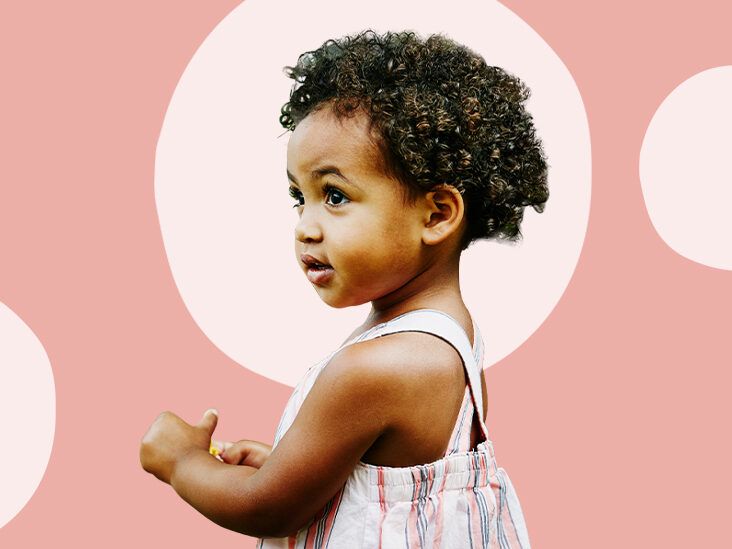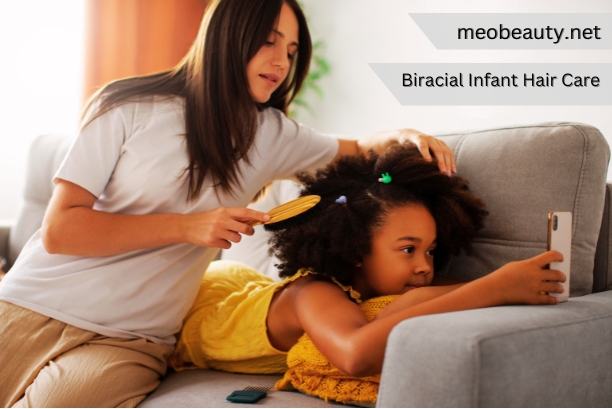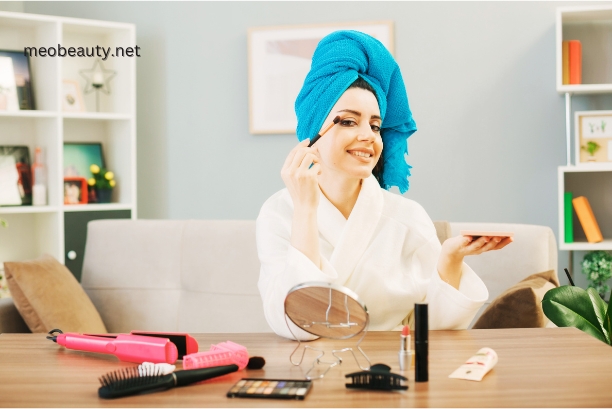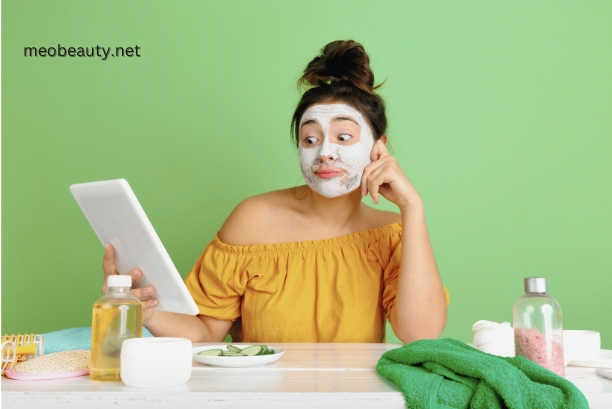Biracial infant hair care requires gentle cleansing and moisturizing to maintain its texture and health. It is crucial to understand the specific needs of biracial infant hair to ensure proper care and nurturing.
This includes using the right products and techniques that cater to the unique characteristics of biracial hair, such as its different curl patterns and porosity levels. By combining moisture-rich shampoos, conditioners, and natural oils, parents can effectively nurture and maintain their biracial infant’s hair, promoting healthy growth and development.
Understanding the dos and don’ts of biracial infant hair care can help parents confidently navigate and embrace their child’s beautiful hair texture. In this guide, we will explore the essential tips and techniques for caring for biracial infant hair, offering practical advice for maintaining its natural beauty and health.

Credit: www.everydayhealth.com
Understanding Biracial Hair
Biracial infants may have unique hair care needs compared to those with a single racial background. Understanding biracial hair is essential for parents to tailor a hair care routine that nurtures the health and beauty of their child’s hair. From learning what biracial hair is to understanding its unique characteristics, this guide aims to empower parents with the knowledge they need to care for their biracial infant’s hair.
What Is Biracial Hair?
Biracial hair refers to hair that is a blend of different textures and curl patterns, often resulting from the mixing of different ethnicities. This can create a unique combination of wavy, curly, or coily hair, varying in thickness and density. It is important to understand that biracial hair is diverse and requires personalized care to maintain its health and vitality.
Unique Characteristics Of Biracial Hair
Biracial hair tends to be more delicate and prone to dryness compared to hair of a single texture. It requires gentle care and nourishment to prevent breakage and maintain moisture. Additionally, biracial hair may have different curl patterns in different areas of the scalp, making it essential to identify and address the specific needs of each section. Understanding these unique characteristics is crucial in developing an effective hair care routine that promotes healthy, well-nourished biracial hair.
Essential Hair Care Routine
When it comes to caring for your biracial infant’s hair, following an essential hair care routine is crucial to maintaining healthy and manageable locks. Understanding the specific needs of biracial hair and implementing a consistent hair care regimen can help keep your little one’s hair soft, moisturized, and free from tangles.
Gentle Shampooing
Using a gentle shampoo designed for biracial hair is essential to avoid stripping the natural oils and moisture from the delicate strands. Look for sulfate-free and moisturizing shampoos to cleanse the hair without causing dryness. Limit shampooing to 1-2 times per week to prevent over-drying the scalp and hair.
Hydration And Moisture
Hydrating your infant’s hair is crucial for maintaining its healthy and manageable state. Opt for moisturizing conditioners that are specifically formulated for biracial hair. After shampooing, gently massage the conditioner through the hair, focusing on the ends. Allow the conditioner to sit for a few minutes before rinsing thoroughly to help lock in moisture.
Detangling Techniques
Effective detangling techniques are essential for preventing breakage and discomfort for your infant. Use a wide-tooth comb or a specialized detangling brush to gently work through any knots or tangles. Begin detangling from the ends and gradually work upwards towards the roots to minimize pulling and reduce hair shedding.
Protective Styling
Implementing protective hairstyles can assist in safeguarding your infant’s hair from damage and breakage. Styles such as braids, twists, or buns can help minimize manipulation and reduce the risk of tangles. Using safe and comfortable hair accessories is crucial to avoid unnecessary pressure or tension on the scalp.
Choosing The Right Hair Products
Choosing the right hair products for your biracial infant is crucial to maintain their beautiful, healthy locks. With so many options available, it can be overwhelming to know where to start. In this section, we will discuss the essential hair products that will help you keep your baby’s hair strong, moisturized, and manageable. From sulfate-free and silicone-free shampoos to moisturizing conditioners, leave-in conditioners, and natural oils for sealing, we’ve got you covered.
Sulfate-free And Silicone-free Shampoos
Sulfate-free and silicone-free shampoos are gentle on your baby’s delicate hair and scalp. Traditional shampoos often contain sulfates, which can strip the natural oils from your little one’s hair, causing dryness. Opting for a sulfate-free shampoo will help retain moisture and prevent hair breakage. Additionally, silicone-free shampoos are ideal as they do not leave any residue on the hair, allowing it to breathe and grow freely.
Moisturizing Conditioners
Moisturizing conditioners are essential for keeping your biracial infant’s hair hydrated and soft. Look for conditioners that are specifically formulated for curly or textured hair. These conditioners are designed to nourish the hair and prevent frizz. They typically contain ingredients like shea butter, coconut oil, and aloe vera, which provide intense moisture and promote healthy growth.
Leave-in Conditioners
Leave-in conditioners are a must-have for maintaining moisture in your baby’s hair throughout the day. They provide an extra layer of hydration, making it easier to manage and style the hair. Leave-in conditioners also help to define curls and prevent tangles. Look for lightweight formulas that won’t weigh down your baby’s hair.
Natural Oils For Sealing
Natural oils are excellent for sealing in moisture and adding shine to your infant’s hair. Some popular options include coconut oil, jojoba oil, and almond oil. These oils are lightweight and easily absorbed, providing the necessary nourishment without leaving a greasy residue. You can apply a small amount of oil to the ends of your baby’s hair to seal in moisture after using a conditioner or leave-in conditioner.

Credit: www.healthline.com
Styling Tips And Techniques
When it comes to caring for biracial infant hair, proper styling techniques are essential to maintain healthy, beautiful locks. By employing the right methods, you can prevent heat damage, reduce manipulation, and help your baby embrace their unique hair texture. In this section, we will discuss some important styling tips and techniques that will keep your little one’s hair strong, moisturized, and tangle-free.
Avoiding Heat Damage
Heat can be particularly damaging to biracial infant hair, as it tends to be more delicate and prone to dryness. To prevent heat damage, it is crucial to limit the use of heat styling tools such as curling irons, flat irons, and blow dryers. In addition, always use a heat protectant spray before applying any heat to your baby’s hair. This will create a barrier between the heat and their strands, minimizing the potential for breakage and brittleness.
Using Wide-toothed Combs And Brushes
When detangling or styling your biracial infant’s hair, it is essential to use the right tools. Wide-toothed combs and brushes are highly recommended for their ability to minimize breakage and prevent tangles. These types of combs and brushes are gentler on the hair and help distribute natural oils evenly, keeping the hair hydrated and reducing frizz. Remember to start from the ends and work your way up towards the roots to avoid any unnecessary pulling or discomfort. Always handle your little one’s hair with care and patience.
Protective Hairstyles For Sleep
Protective hairstyles play a vital role in maintaining the health and integrity of biracial infant hair, especially during sleep. These hairstyles not only prevent tangling but also help to retain moisture and minimize friction. Consider using gentle hair ties, satin or silk bonnets, or silk pillowcases to protect your baby’s hair while they sleep. These measures also help to preserve the hairstyle and reduce the need for excessive restyling.
Avoiding Excessive Manipulation
Biracial infant hair can be fragile, and excessive manipulation can lead to breakage and damage. Opt for gentle styling techniques that do not put unnecessary strain on your baby’s hair. Avoid tight hairstyles that pull the hair tightly against the scalp, as these can lead to traction alopecia. Instead, opt for loose, comfortable styles that allow the hair to breathe and grow freely. Additionally, minimize the use of hair accessories and try to avoid too many hair-related activities, allowing the hair to rest and thrive naturally.
Addressing Common Hair Challenges
Discover how to effectively address common challenges in biracial infant hair care. Learn tips and techniques for nurturing and styling your little one’s unique hair texture, promoting healthy growth and beautiful curls. Say goodbye to hair struggles and hello to happy, healthy hair days.
Dryness And Frizz
Biracial infant hair is prone to dryness and frizz due to its unique texture and structure. To combat this, it’s important to establish a consistent moisturizing routine. Use a gentle, sulfate-free shampoo to cleanse the hair without stripping it of natural oils. Follow up with a moisturizing conditioner that is specifically formulated for biracial hair. Ensure that the conditioner is applied all over the hair, focusing on the ends.
After washing, apply a leave-in conditioner or moisturizing cream to provide continuous hydration throughout the day. Gently detangle the hair using a wide-tooth comb or your fingers, starting from the ends and working your way up to prevent breakage. Avoid using heat styling tools, as they can further dehydrate the hair. Instead, embrace protective hairstyles like braids, twists, or buns to minimize frizz.
Breakage And Split Ends
Breakage and split ends are common hair challenges for biracial infants. To prevent breakage, handle the hair with care and avoid excessive pulling or tugging. Regular trims every 8-12 weeks can help to remove split ends and promote healthy hair growth. In addition, using a wide-tooth comb or fingers to detangle the hair while wet, starting from the ends and working your way up, can minimize breakage.
To further protect the hair, avoid harsh hair accessories that can cause snagging or pulling. Opt for soft hair ties or stretchy headbands that won’t put excessive pressure on the hair. Silk or satin pillowcases and bonnets can also help to prevent breakage by minimizing friction while sleeping. Remember, gentle care is key to maintaining healthy and strong biracial infant hair.
Scalp Care And Dandruff
Proper scalp care is essential for maintaining healthy biracial infant hair. It’s important to keep the scalp clean and free from build-up, which can contribute to dandruff. Gently massage the scalp with your fingertips while washing to remove any dirt or excess oil. Be sure to rinse thoroughly to avoid residue that can lead to itching and flakiness.
If dandruff persists, consider using a mild, medicated shampoo specifically formulated to treat dandruff. However, consult with a pediatrician or dermatologist before using any medicated products on your infant’s scalp. Additionally, incorporating a weekly scalp massage with natural oils, such as jojoba or coconut oil, can help to nourish the scalp and reduce dryness.
Promoting Hair Growth
Promoting healthy hair growth is essential for biracial infant hair care. Ensure that your infant receives a balanced diet rich in vitamins and minerals, as nutrition plays a crucial role in hair growth. Gentle scalp massages can help to stimulate blood flow to the hair follicles, promoting faster growth. Opting for protective hairstyles can also protect the hair from damage, allowing it to grow longer and stronger.
Remember, consistency is key when it comes to promoting hair growth. Establish a hair care routine that includes regular washing, conditioning, moisturizing, and minimal heat styling. With patience and proper care, you can support your biracial infant’s hair growth journey.

Credit: www.healthline.com
Frequently Asked Questions On Biracial Infant Hair Care
How Often Should I Wash My Biracial Infant’s Hair?
It is recommended to wash your biracial infant’s hair every 1-2 weeks. Over-washing can strip natural oils from the hair and lead to dryness, while waiting too long between washes can cause buildup and scalp issues.
What Kind Of Shampoo Should I Use For My Biracial Infant’s Hair?
Look for a gentle shampoo specifically designed for babies, preferably one that is sulfate-free and pH balanced. Additionally, choose a shampoo that is formulated for biracial or multicultural hair, as it will be more suited to their unique hair needs.
How Do I Detangle My Biracial Infant’s Hair Without Causing Pain?
Start by applying a leave-in conditioner or detangler spray to help soften the hair. Then, use a wide-toothed comb or your fingers to gently separate any knots or tangles, starting from the ends and working your way up toward the roots.
Take your time and be patient to avoid causing any pain or discomfort.
How Can I Moisturize My Biracial Infant’s Hair?
To moisturize your biracial infant’s hair, use a water-based leave-in conditioner or a moisturizing spray. Apply it to their hair in sections, making sure to distribute it evenly from roots to ends. You can also seal in the moisture with a natural oil or butter, such as coconut oil or shea butter.
Conclusion
Proper hair care for biracial infants is essential to maintain their unique texture and promote healthy growth. By following a few simple steps and using the right products, parents can nurture and protect their child’s hair. From gentle cleansing to moisturizing and detangling, understanding the needs of biracial hair is key.
Embracing the beauty of diversity and providing the right care will ensure that your little one’s hair thrives and shines. Happy hair, happy baby!









Leave a Reply